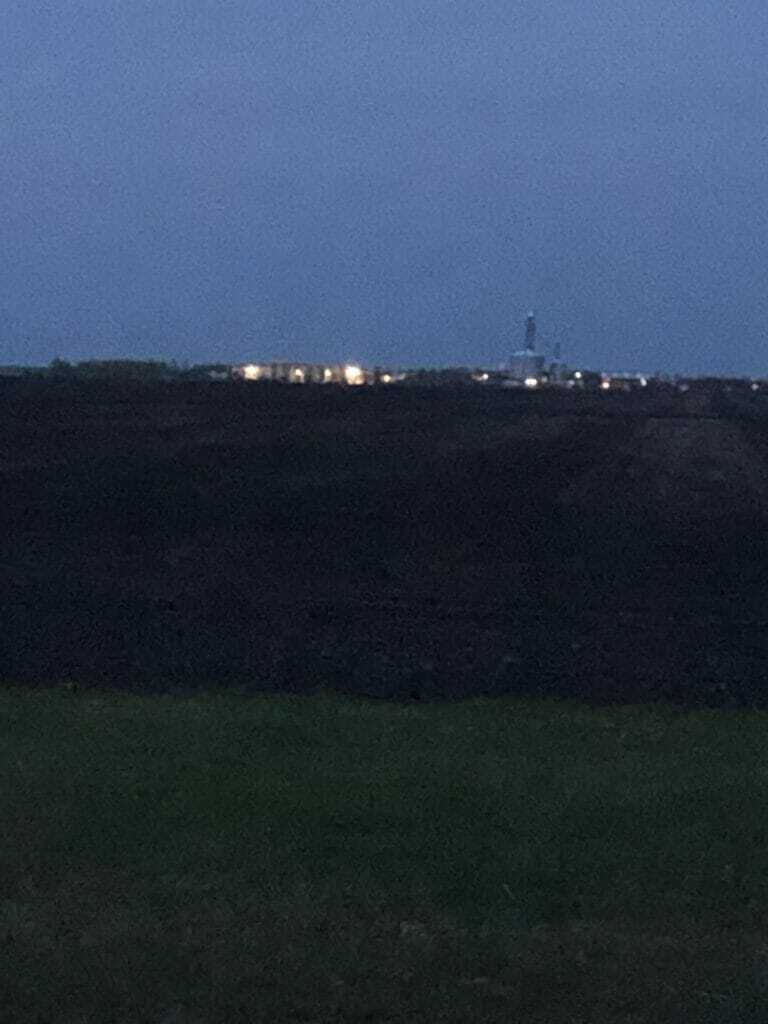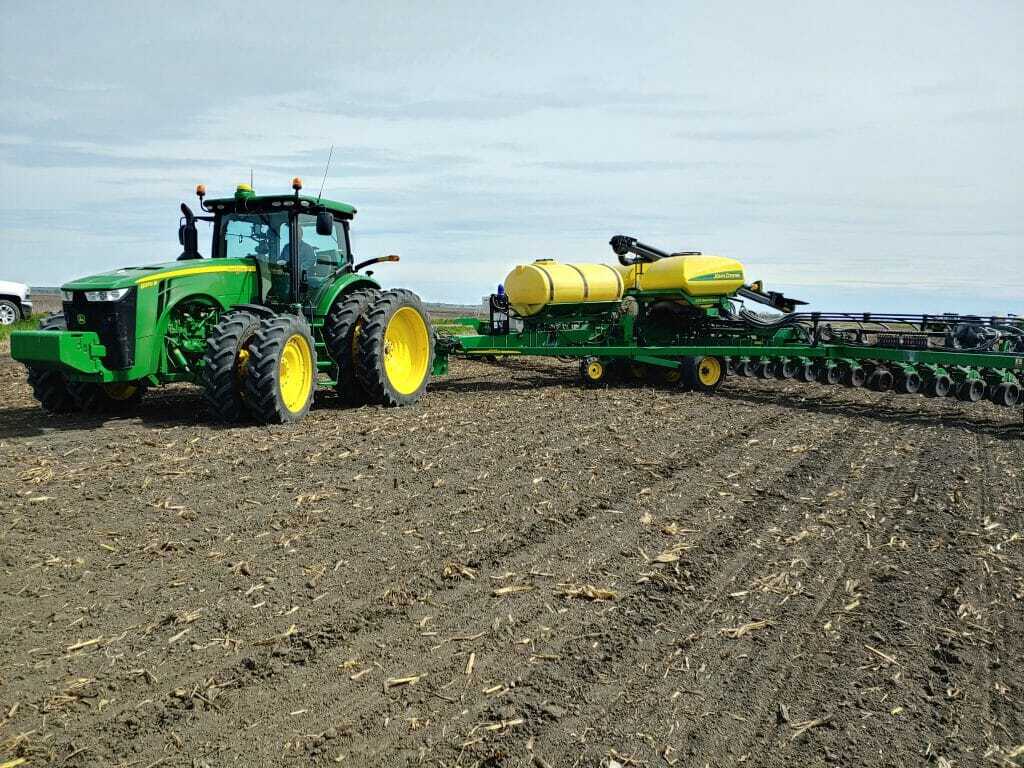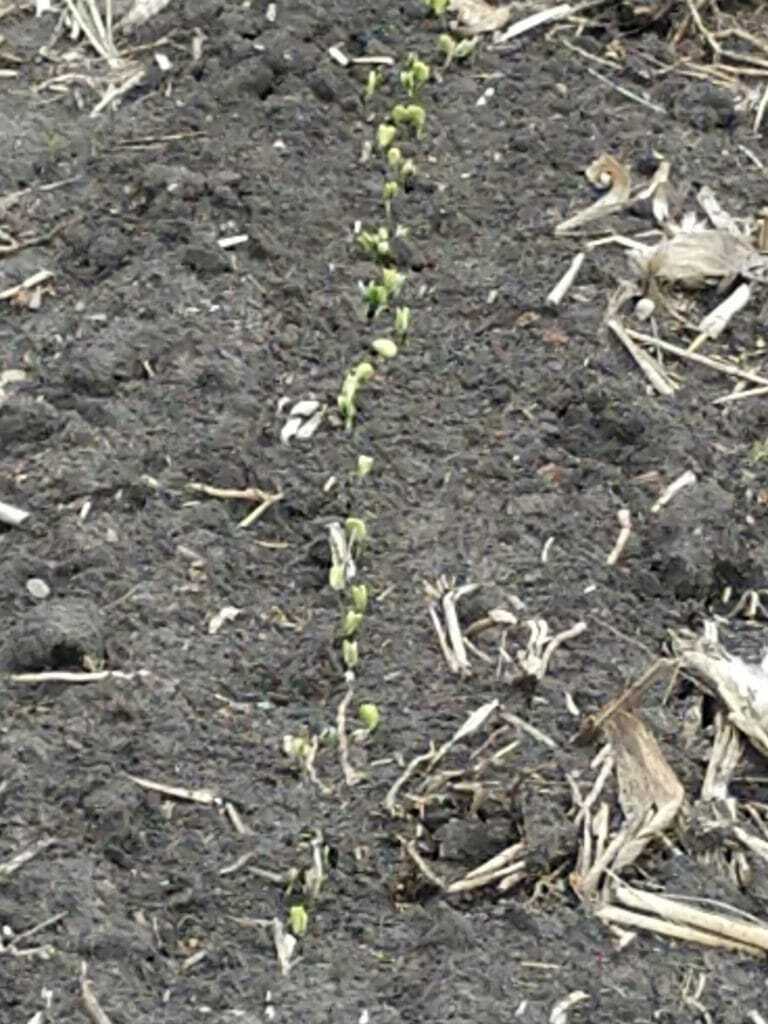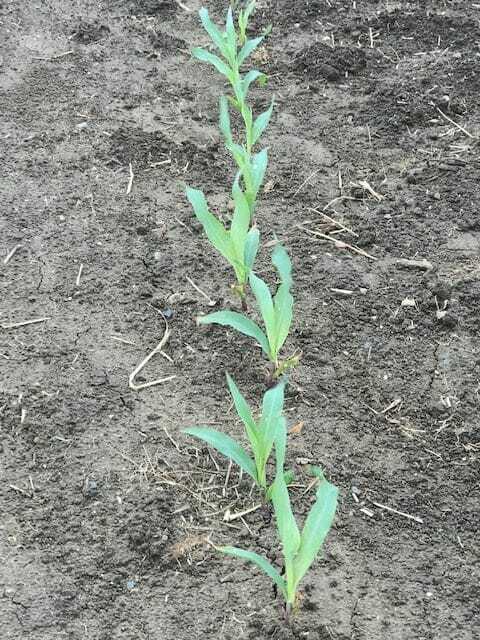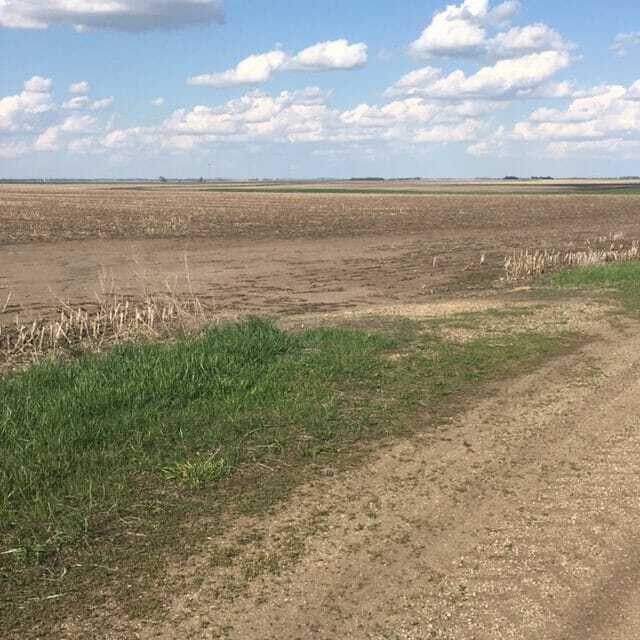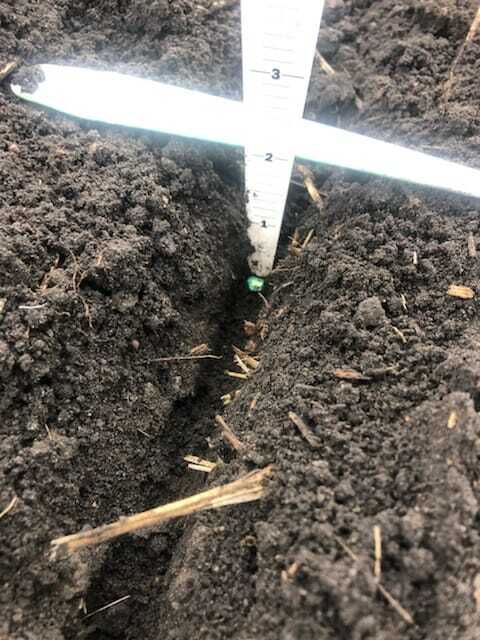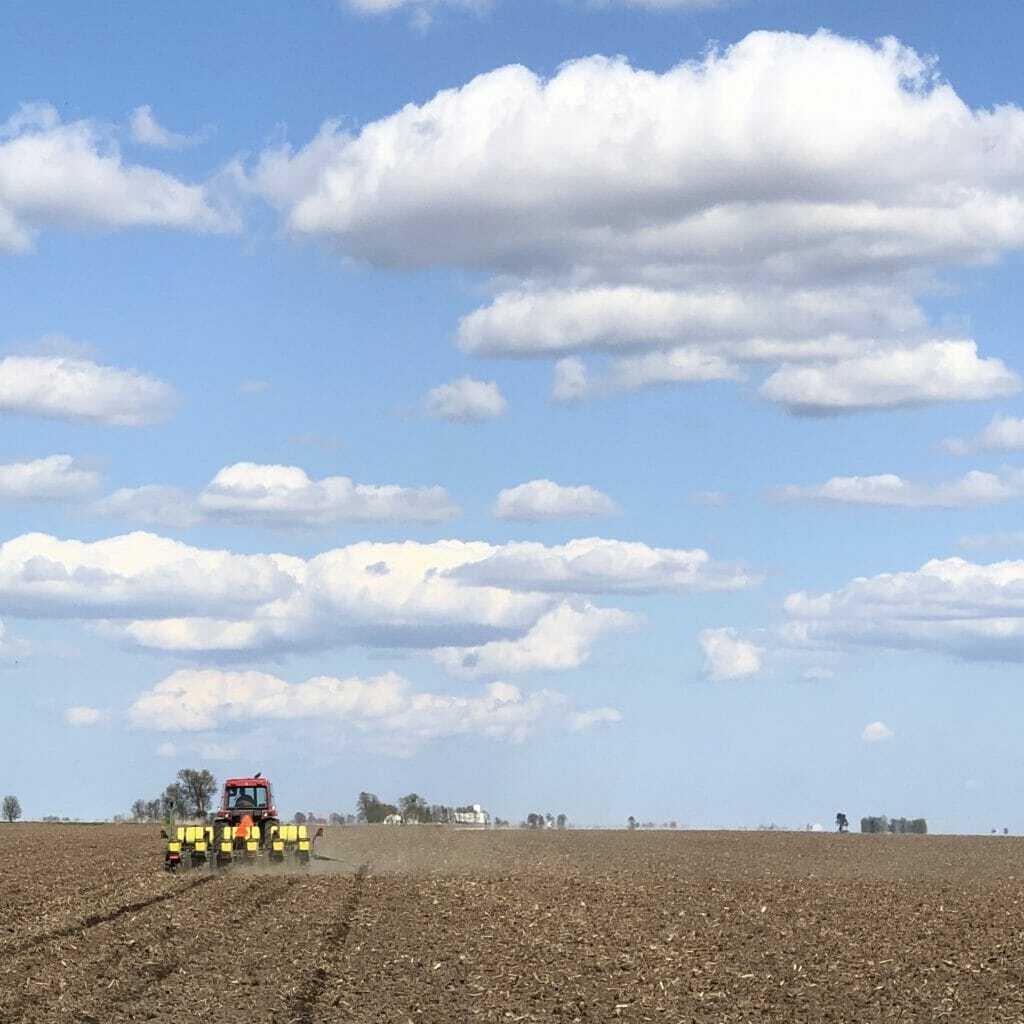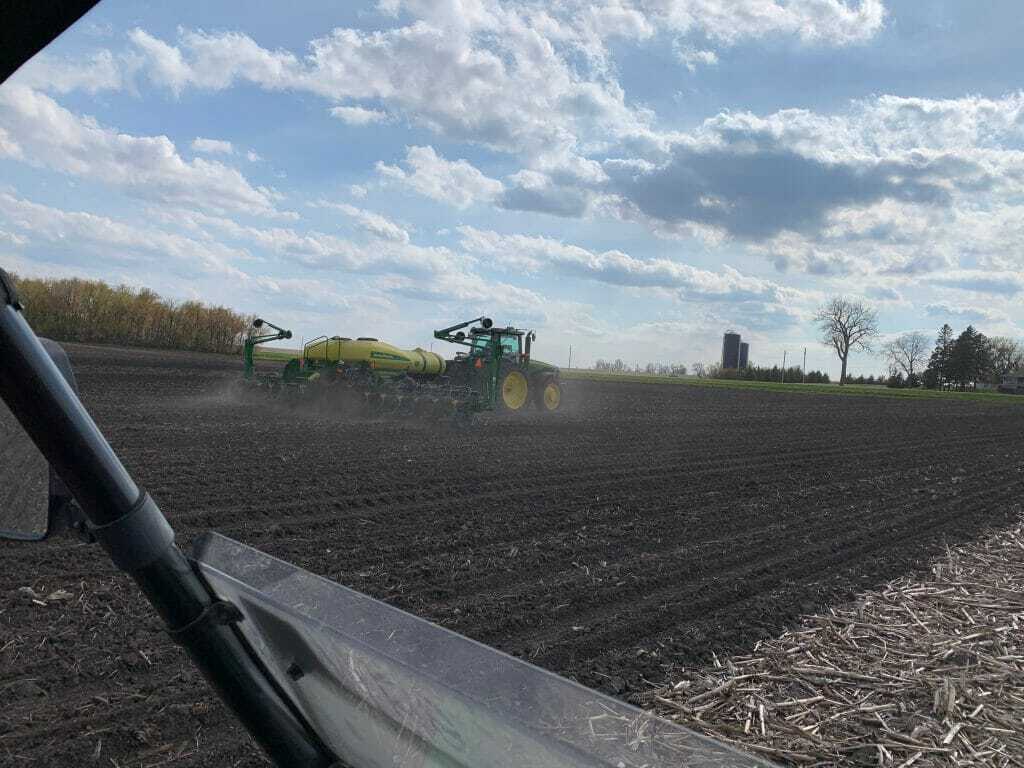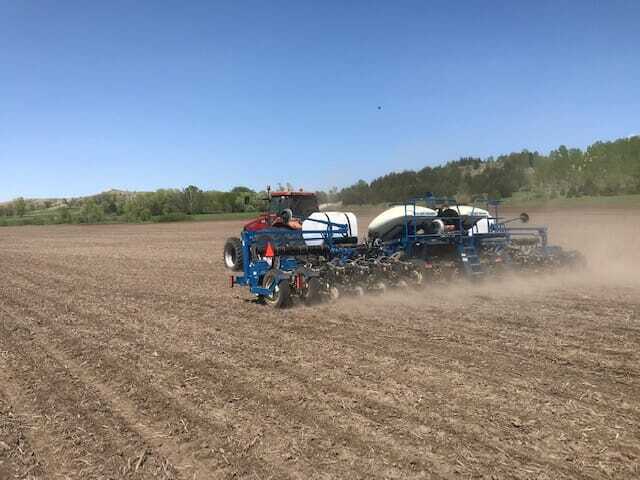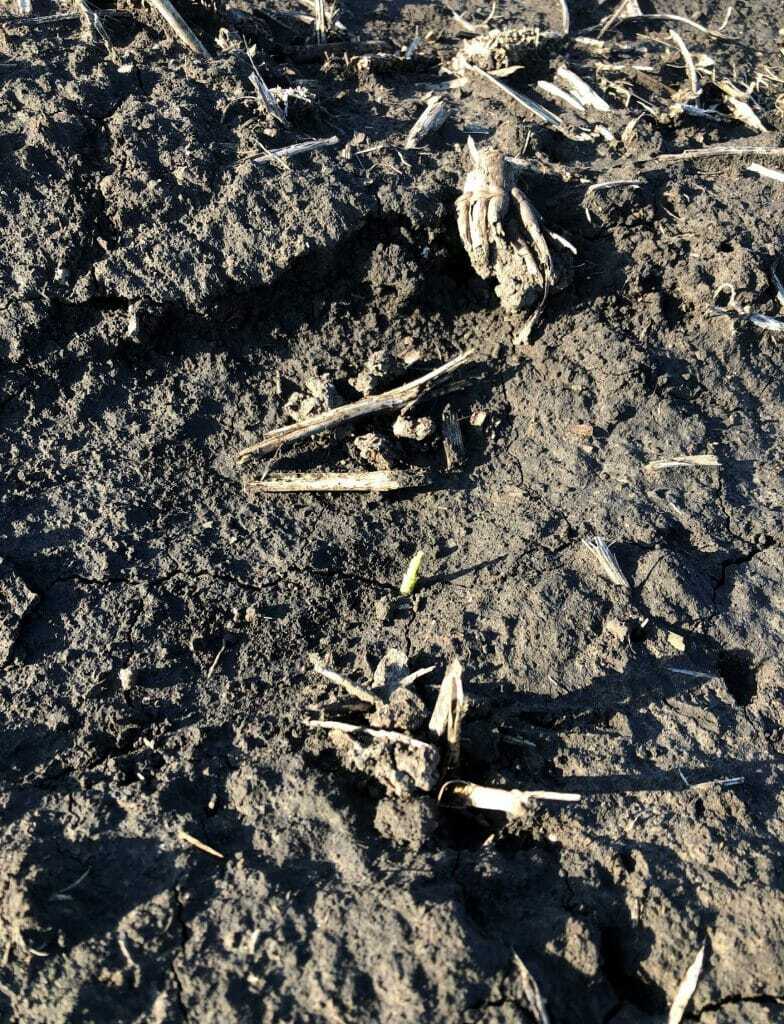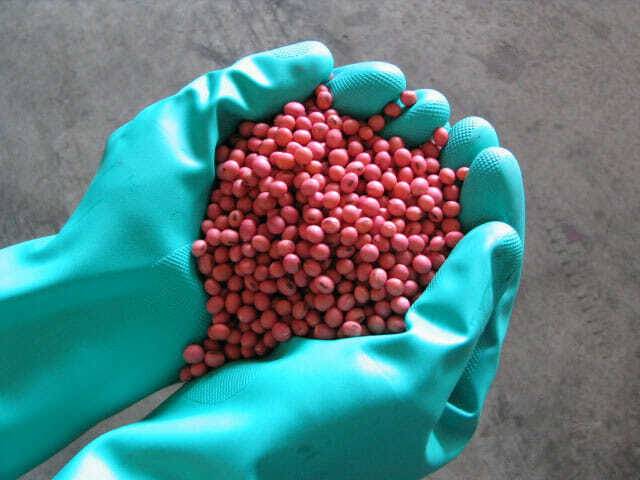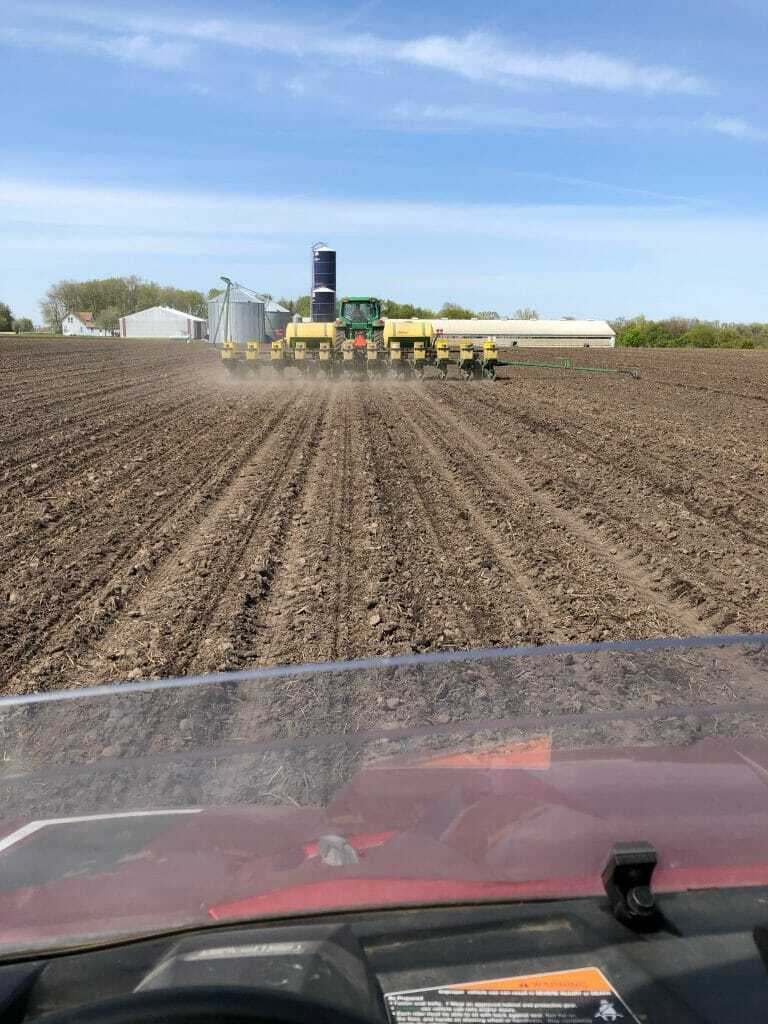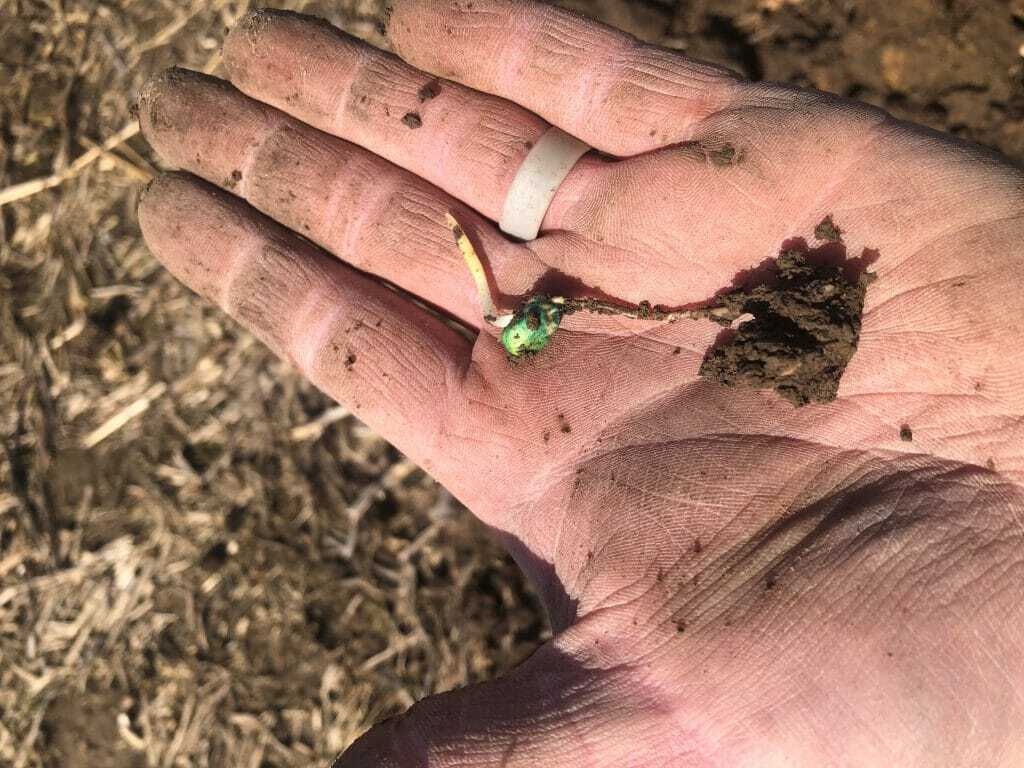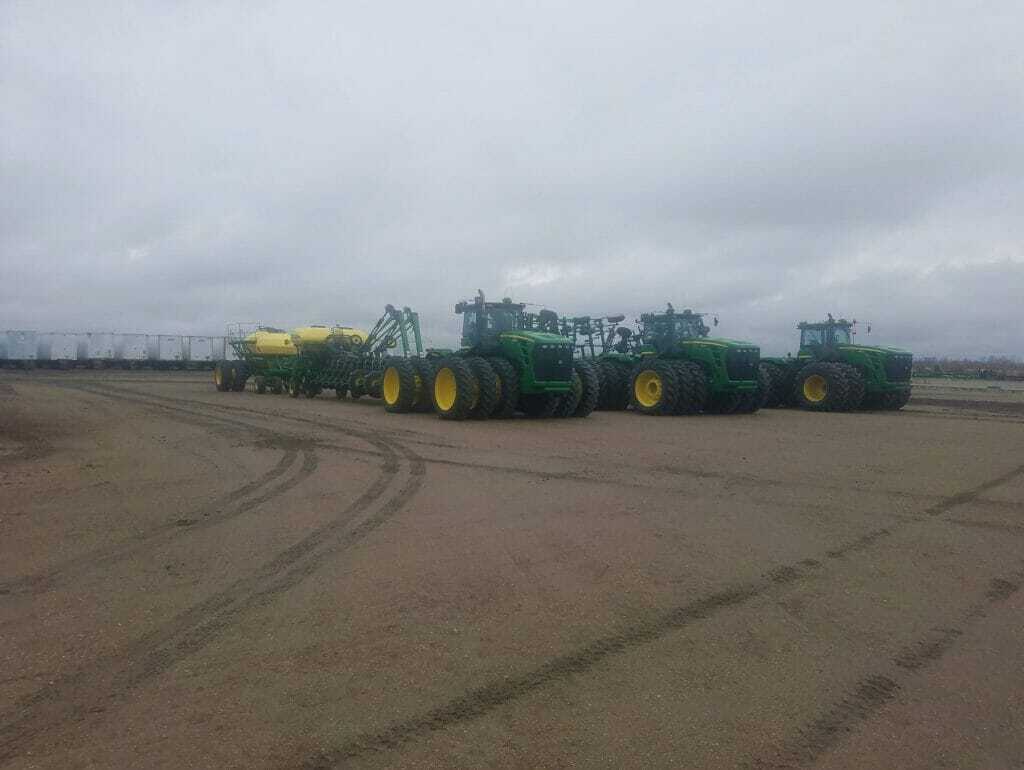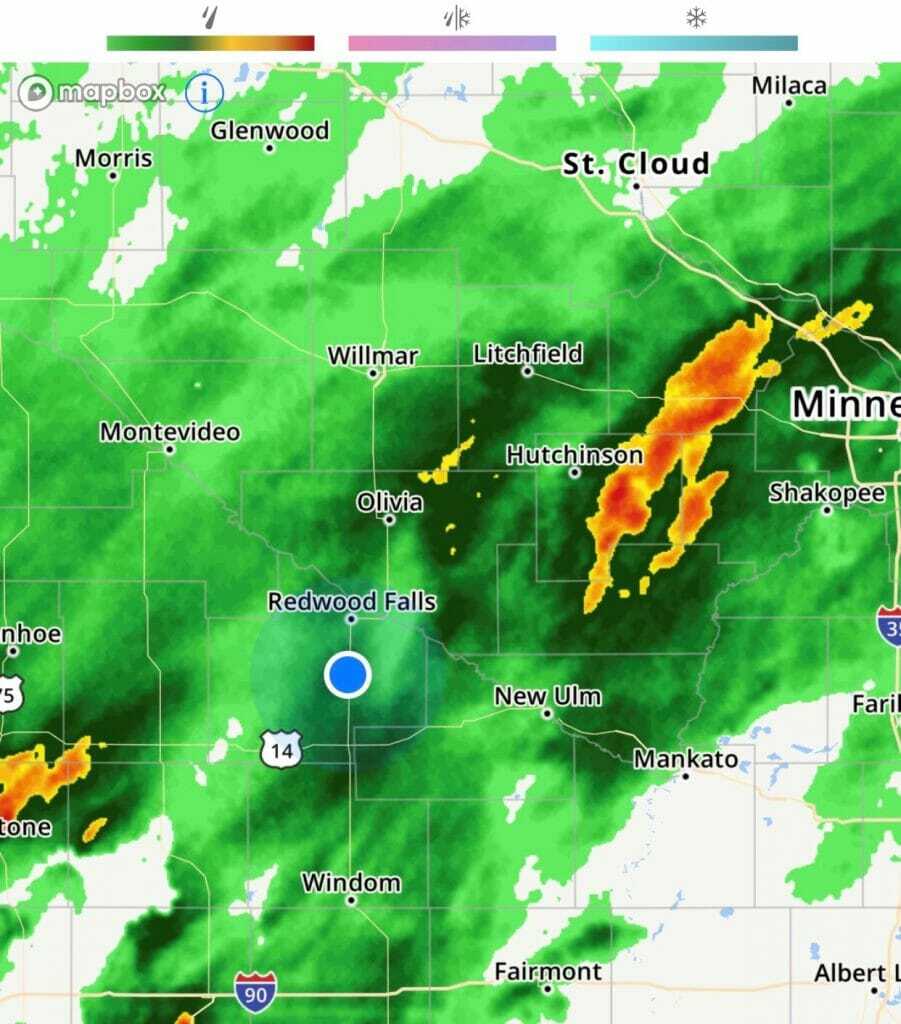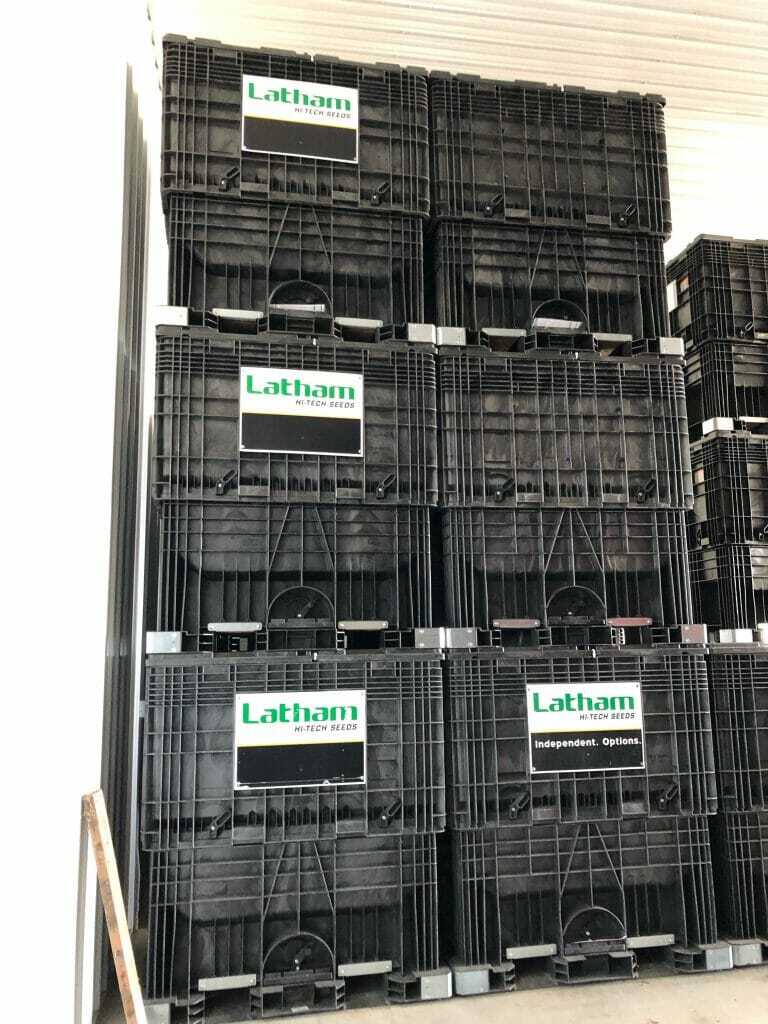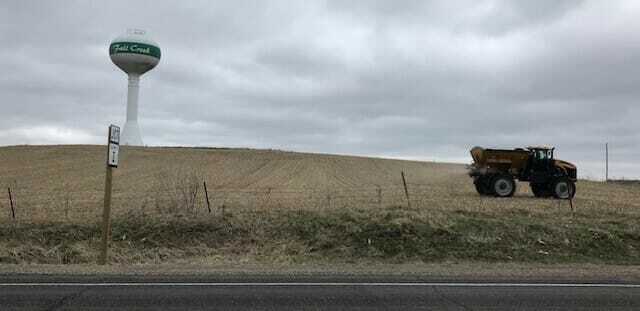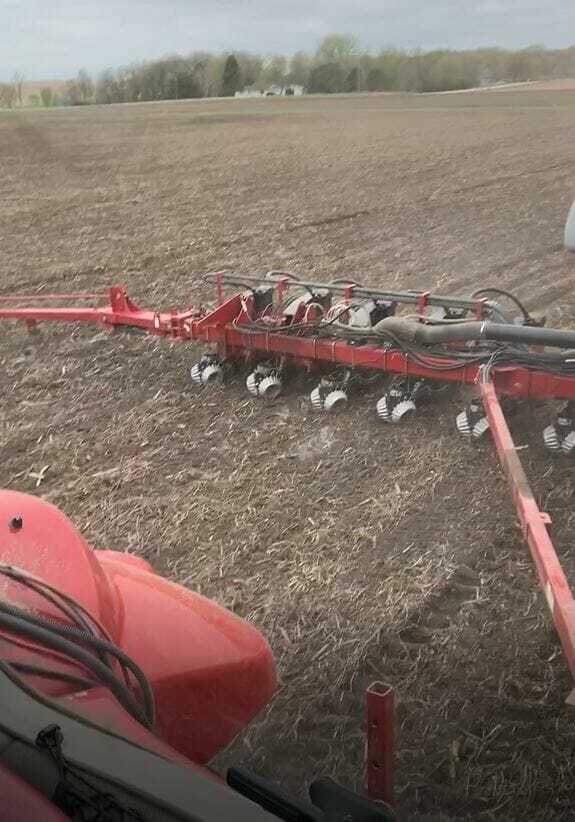-
Latham Hi‑Tech Seeds
#AskTheAgronomist: 2019 Planting Season Continues to be Delayed
 Tune in this morning as Phil Long discusses different options for farmers to consider as we wait to get back in the field. #AskTheAgronomist
Tune in this morning as Phil Long discusses different options for farmers to consider as we wait to get back in the field. #AskTheAgronomist -
Latham Hi‑Tech Seeds
May 22, 2019 Crop Reports

Eastern North Dakota
Brain McNamee
Just like last spring, farmers in the North Central and Northwest part of my territory have missed the rains. Planting has progressed there for more than 20 days. Last night I drove about 200 miles from home, north to south, and saw maybe half a dozen tractors total in the fields. Of that equipment, it appeared an even split between planters, tillage and rollers. Corn continues to be planted as we push closer to the insurance deadline. All last-minute and final acre decisions are leaning toward corn.
Southeast North Dakota
Gary Geske
With more rain in the forecast, farmers are putting in longer hours to plant what they can now. Take time during this next rain delay to scout previously planted fields for weeds, germination and early crop growth. If you’re planning to use a pre-emergence herbicide, most must be applied before the crop emerges to avoid injuring the growing crop.
Northeast South Dakota
James Keltgen
It’s been another wet week in Northeast South Dakota! Farmers pushed hard in areas the last half of last week. I’m hearing everything from 0% to 100% done with planting corn. Most farmers are somewhere in the 20 to 40% completed range. Nearly three inches of rain have fallen since last week, so some farmers are thinking about planting earlier hybrids. We’re praying for a break in this rainy weather pattern.
Southeast South Dakota
Ramie Coughlin
Last week we had four days of dry weather, so planters got in the field. I’ve heard reports from farmers, ranging from 100% to 0% planted on corn. It was a relief that fields were dry enough to plant last week, but it was unfortunate the next rain system wasn’t far behind. Rain fell Friday night across most of eastern and western South Dakota and continued into Saturday and Sunday. The next system flared up Tuesday and has continued into today. We’re hopeful that good drying weather in the days to come as warmer temperatures are suppose to be on the way.
Northern Minnesota
Ken Highness
This past week brought favorable conditions for field work with soil temperatures above 50-degree mark. Latham® Dealer Riverton Seed planted L 0982 RR2, which was the Red River’s F.I.R.S.T. Trials winner. Many farmers were busy finishing tillage while some started planting. A few areas experienced large amount of rain and some even received snow last weekend. The good news is we’re still within the time period for great yields, so there’s no need to think about switching maturities yet!
Southern Minnesota
Justin Prokosch
Last week was a strong week for many farmers in southern Minnesota. Many farmers finished planting corn, and some got started on soybeans. With rain coming in last Friday, I convinced my wife to help put in my last Latham SuperStrip™ on our home farm. We pulled out all the stops to get it planted right before it started raining!
Northern Wisconsin
Joe Salter
This last week we gained some ground! Tractors were running steady because farmers knew rain would soon hit us. Northern Wisconsin planting progress ranges from zero acres planted to almost done. A few more Latham plots went in the ground.
Southern Wisconsin
Greg Mair
Seed that has been in the ground for three or more weeks is finally emerging. These acres are a little pale green, but the stands look fairly uniform given what they have been through. More rain in the forecast this week, but farmers remain hopeful for good conditions to finish planting this spring.
North Central Iowa
Cory Greiman
Latham 2193 E3 beans were planted near Garner on May 7. This picture was taken on May 16. We could use a little sunshine and warmth.
Northeast Iowa
Craig Haaland
This no-till customer in Mitchell County, Iowa, was able to plant soybeans last Thursday. Quite a few farmers got seed in the ground last Monday through Thursday. Spotty rains fell Friday and Saturday, with rainfall totals ranging from 1.5 to 5 inches. Most area farmers finished planting corn last week and got a decent start on soybeans. Temperatures have been up and down these past few weeks, so some seed is struggling to emerge. We need warm and dry weather, so we can finish the 2019 planting season.
Northwest Iowa
Darin Chapman
These photos show Latham LH 5245 VT2 PRO planted May 5 at 36,000 population. We’ve only had a few days of sunshine to get this crop started, so I’m happy to see good emergence and the start of a nice stand.
Eastern Iowa
Jerry Broders
We managed to string together four days of dry weather to get some much needed planting done. Some fields were not “ideal” for planting as you can see the soil packed on the press wheels and travel wheels of this planter. #Plant19 continues to be an adventure.
Western Iowa
Larry Krapfl
You can row this field of Latham L 3187 L that was planted April 18 in western Iowa.
This 20-year old CRP ground was planted to LH 5819 SS on April 18 near Climbing Hill, IA.
West North Central Iowa
Bart Peterson
Last week I dumped 1.3 inches from my Latham rain gauge in Dakota City, Iowa. It’s been challenging to put seed in the ground when it seems to rain each time the fields are almost dry enough to enter. I’m guessing 99% of the corn is planted and 60% of soybeans are planted in West Central Iowa. My North Central territory is a little behind that with about 70% of the corn acres planted and 25% of the soybeans planted.
Central Iowa
Bryan Rohe
Rain continues to fall across Central Iowa, and the 5-day forecast calls for more. The central region is 95% done with planting corn and 60% done with soybeans, so we’re pretty fortunate. Once it stops raining and dries up, planting will finish in a hurry.
-
Latham Hi‑Tech Seeds
#AskTheAgronomist: Crusting Soils

How does crusting and rolling soybeans go hand in hand this season? Phil Long talks about these two topics in reference to this year’s growing season.
-
Latham Hi‑Tech Seeds
May 15, 2019 Crop Reports

Eastern North Dakota
Brain McNamee
I forgot how many thousands of acres of soybeans were left standing yet this spring. I believe last year’s crop may finally be 100% harvested.
Southeast North Dakota
Gary Geske
While it doesn’t look like much yet, these areas will provide important training for Latham sales managers, dealers and customers. This research plot planted near Minot, North Dakota, will give us replicated yields to help confirm our current seed lineup. We will watch silage hybrids and compare seed treatments, as well as conduct population studies. These plots also will give us a look into the future on new hybrids with tolerance to drought and heat stress, using natural selection without including traits. In- field training camps, which will be held throughout the growing season, help Latham sales managers and dealers earn the trust of their customers when making seed selections.
Northeast South Dakota
James Keltgen
This sun is finally shining! Big rains are expected, with totals nearing 4 inches this weekend, so the race is on in Northeast South Dakota. Farmers are getting a good start on corn, and a few people are planting soybeans since the fields are fit. We will find out how much corn can be planted in four days as that looks to be our short window of opportunity. Some farms in Central and Southeast South Dakota received rain Monday night, which delayed planting further.
Southeast South Dakota
Ramie Coughlin
As I drive across my territory, it’s strange to see bare fields. Wet weather has delayed planting again. The good news is that we’re in the middle of 5 days of warm weather and sunshine. I’m hopeful that we’ll see some corn go in the ground the next couple days. While we’re all eager to get going, I want to remind farmers that it’s still too early to back off on corn maturities. Research has shown that you can safely plant your fuller season hybrids until June
Northern Minnesota
Ken Highness
The main objective at planting time is to provide seed with an environment that promotes rapid germination and vigorous early growth. Optimal planting depth for corn in 2 inches deep and 1.5 inches for soybeans. Latham Dealer is checking seed depth in a field of LH 3937 VT2 PRO RIB.
It’s important to get out of the cab and check planting depth. Two major problems can result from planting too deep: delayed emergence and uneven stands. Corn seed that is planted too shallow can lead to rootless corn syndrome, which causes corn plants to fall over due to poor nodal root development.
Southern Minnesota
Justin Prokosch
Last week’s wet weather allowed us to delivered to more seed to customers. Thankfully, we got some dry weather. Most farmers started planting corn this week, and I was able to put in a plot near Willmar.
Northern Wisconsin
Joe Salter
Soil temperatures finally reached the 50’s, but timely rains have kept most farmers from turning wheels in northern Wisconsin. Many farmers have yet to plant any crop. We were fortunate to get two corn plots in the ground this week, one in Fall Creek and one in Almena.

Southern Wisconsin
Greg Mair
Farmers in southern Wisconsin finally go back in the fields on Monday. Now that fields are fit, we’re working to dial in the monitors for best spacing, down pressure and singulation. Maximizing the planter singulation can increase profit potential on the farm by properly placed seed and full utilization of moisture and sunlight.
The weather cooperated on Monday, so we put in a corn test plot in Oshkosh. We’re hoping for a good week of field work, so we can make a lot of progress on corn. The first corn fields that were planted have yet to emerge, and seed has been laying in the ground for three weeks now.
North Central Iowa
Cory Greiman
Earlier this week I delivered seed to cooperators in South Central Minnesota and North Central Iowa who will plant Latham® SuperStrip soybean plots. This on-farm research plays an important role in selecting soybeans for our lineup.
Northeast Iowa
Craig Haaland
After a short week of not being in the fields, farmers were rolling again on Sunday and Monday. This photo shows a Latham® Hybrids SuperStrip Plot we planted Monday in Southeast Minnesota. The soils were ideal. A lot of corn is going in the ground in a short amount of time as farmers are eager to finish before moving on to planting soybeans. Not many acres of soybeans have been planted yet in my territory.
Northwest Iowa
Darin Chapman
Northwest Iowa could receive four inches of rain this weekend, so it has been nice to make some corn planting progress this week. Farmers are eager to start planting soybeans, but it’s important to wait for fit conditions to avoid issues going forward. Soils have been wet and cold this spring, but a good seed treatment like Latham’s Soyshield Plus helps protect yield.
Eastern Iowa
Jerry Broders
After last Thursday’s rain in Eastern Iowa, planters didn’t start rolling again until Sunday evening or late Monday morning.
Western Iowa
Larry Krapfl
At last! Favorable weather returned, so we are able to resume planting Latham plots.
West North Central Iowa
Bart Peterson
This field of L 1858 R2, which was planted April 21 near Odebolt, Iowa, is just popping out of the ground.
Central Iowa
Bryan Rohe
Farmers are trying to get the last of their corn in the ground. There was a very small planting window last week, and farmers throughout Central Iowa got rained out Monday evening. During the past week, some of the early planted corn has emerged. Some corn plants are tall enough to row, and the stand looks pretty good. With soil temps hovering around 46 to 47 degrees at 2 to 3 inches deep, crop development is slow. Heat units are about three weeks behind.
-
Latham Hi‑Tech Seeds
#AskTheAgronomist: Imbibitional Chilling or Chilling Injury?

Will your planted fields be affected by imbibitional chilling? Tune in the hear symptoms of the chilling effect.
-
Latham Hi‑Tech Seeds
May 8, 2019 Crop Reports

Eastern North Dakota
Brain McNamee
Many farmers had planned to start planting after the weekend, but all it took was one farmer to roll. Then another one. And another. All of the sudden, it’s time to go! Farmers here are rolling on corn. Remember, it’s important to look at the short-term forecast before planting. Next week calls for daytime highs in the 60’s and 70’s with lows in the 40’s with minimal moisture. Soils look to be warmer, which helps with germination and faster emergence.
Southeast North Dakota
Gary Geske
Although soil temps are still below 50 degrees, farmers are considering planting soybeans. Seed treatments, like Latham SoyShield™ Plus, have fungicides to protect the seed from germination through early growth stages plus insecticide with additional growth promoters to help protect and enhance early growth. Check with your Latham® dealer or RSM to see if the varieties you’re looking for are still available.
Southeast South Dakota
Ramie Coughlin
Things haven’t changed much this past week in Southeast South Dakota. We got a few dry days of weather, which allowed some small grains to get planted. This sky has been full of spray planes. We’re still fighting moisture every few days. Rain fell across the whole state at the beginning of this week. Soaking rain and even snow is in the forecast for Wednesday.
Northern Minnesota
Ken Highness
This picture was taken near Foxholm, Minnesota. Despite planting delays, wheat, sugar beets and some corn seed is in the ground. Keep in mind, field conditions should be the main consideration. To get good plant stands, you must plant into good soil conditions. The worst thing we can do is plant in wet soils! Working soils that are too wet can have these negative impacts on your crop all growing season: stunted plant growth, slowed infiltration of water, poor root system development, and nutrient deficiency.
Southern Minnesota
Justin Prokosch
With favorable drying weather last weekend across southern Minnesota, many farmers put corn in the ground on Monday and Tuesday. Three of my Latham® corn plots were planted Tuesday near Mountain Lake, Hanska, and Vernon Center. Farmers in the north are still trying to find dry fields to plant; tile is sure paying off this spring. More wet weather looks like it’s headed our way for the next couple of days, so we are praying we don’t get too much.
Northern Wisconsin
Joe Salter
Planting season is off to a slow start across Northern Wisconsin due to frequent rains, and more rain is in the forecast. The poor planting weather is giving local dealers time to breath and reorganize inventory.
Southern Wisconsin
Greg Mair
This new seeding of HarvXtra is emerging in Cambridge, Wisconsin. Conditions were perfect April 22 when this field was planted. Our first Latham® Corn SuperStrip in the ground near Monroe on May 5. Conditions were perfect when we planted this no-till field, and we were able to finish a few hours before the next rain fell. Scattered showers are forecast for this week, but the forecast improves on Friday with six days of sunshine IN A ROW!
North Central Iowa
Cory Greiman
Temperatures are rising! The soil temperature at 4-inch depth within the seed furrow of a SuperStrip corn plot near Garner on Tuesday read 62 degrees at 6:30 PM.
Northeast Iowa
Craig Haaland
This field in Cerro Gordo County is being planted to LH 5099 SS. Planting depth is 2 inches, and good seed-to-soil contact is critical. Many farmers planted last weekend through Monday. Area farmers backed off from planting yesterday with rain and cooler temps in the short-term forecast.
Pitzenberger Farms crew sorting seed for planting.
Northwest Iowa
Darin Chapman
The weather finally allowed us to get our first Latham SuperStrip corn plot of the season planted in Alta, Iowa. The forcast shows a chance of an inch of rain with cool temperatures for the next couple of days. Bring on that sunshine and heat units!
Eastern Iowa
Jerry Broders
Anywhere from .5 to 4.5 inches of rain fell last week in Eastern Iowa. As a result, there was various field work underway. I saw everything from tillage work to parked planters. Farmers in the western part of my territory got going again late Saturday while those south of Dubuque have yet to start.
Western Iowa
Larry Krapfl
We attempted to plant a corn plot but got rained out before we even started. The rain didn’t stop this curious visitor from checking out the Latham bags.
West North Central Iowa
Bart Peterson
This engaged couple is working together to plant their first Latham® SuperStrip plot near Hardy, Iowa, on May 3. Here they’re shop vacuuming plot seed before we plant the next hybrid.
Jon and Jenna running shop vacs before the next hybrid is planted in this Latham® SuperStrip plot.
Central Iowa
Bryan Rohe
Planting resumed Saturday, May 5, across Central Iowa. More showers fell Monday. Cooler weather with heavy rain is expected Wednesday, which is keeping a majority of farmers from planting. This photos shows Latham 5965 that was planted April 20 in Oskaloosa, Iowa. Then other two photos show LH 6187 corn plot planted April 25.
Be sure to watch for un-even stand and for corn that’s growing downward as heat units are significantly lower than were needed when some farmers planted. Exercise patience and wait for soils to dry before re-entering fields.
-
Latham Hi‑Tech Seeds
Key Dates for Switching Maturities

Each day we turn the calendar, I receive more calls from Latham® dealers and farmers asking whether they should change maturities. Keep in mind, the object is to achieve maximum yield potential for this crop. When you switch maturities, you forfeit maximum potential and have essentially decided to lower your yield expectations!
Based on my experiences over the past 40 years – as well as research findings from many Midwest land grant institutions – I can tell you with confidence that full-season hybrids and varieties outperform early maturing hybrids and varieties. Most people jump the gun and make the switch way too soon. Corn planted in mid-June can make decent yields, and there’s no need to switch from corn to soybeans until after that.
There becomes a point in time where the advantages of planting a full-season hybrid diminishes to the point where shifting to a shorter-season hybrid or variety will generally result in drier corn and higher yields come fall. Below is a summary of factors to consider when deciding whether to switch corn or soybean maturities.
CORN
I’ll use northern Iowa and southern Minnesota as an example. If your maturity range is 98- to 109-days (which is what I use for the Latham Research Farm), then you should generally not deviate from those maturities until at least May 25. If all you have left to plant is your 98-day hybrids, then you can safely extend your planting window to about June 7-10. On the other hand, if you only have your 109-day hybrids left to plant, you’ll probably be better off switching to 95- or 99-day products.
That brings us to the next subject… if you must switch, how early of a hybrid is needed? You don’t need to take it to extreme and switch from 109 RM to an 85-day hybrid or something equally silly! Research has proven that it pays to stay closer to your “normal” maturity. Switch to hybrids that are about 5 to 7 relative maturity units earlier than full season for the region. Yields in this scenario will be greatly improved if northern Iowa and southern Minnesota farmers (from the example above) move toward a 92- to 95-day hybrid that is more closely adapted to the area.
The decision to switch maturity with delayed corn planting is difficult because of so many variables including: available GDUs, first frost date and fall drying conditions. With this in mind, here are some general guidelines for Iowa farmers:
Location
within IowaFull Season RM Switch to
on May 25Switch to
on June 10South of U.S. 92 114-117 108-111 105-109 Central 108-115 104-110 100-106 North of U.S. 20 100-109 96-105 94-100 For your convenience, below are few links to related articles: Adjust this information depending on where you farm, but make your decision is based on sound research and not “coffee shop facts.” Just because your neighbor is switching doesn’t mean it’s the best decision. Conduct a little research of your own before deciding what might be best for your operation.
- Soybean Planting Decision Tool by Iowa State University Extension
- Late Corn Planting Options by Iowa State University Extension
- Corn Planting Guide by South Dakota State Extension
- Considerations for Late Planted Corn by North Dakota State University
- Soybean Planting Date and Maturity Considerations by University of Wisconsin-Madison Extension
- Considerations for Late-Planted Corn in Minnesota by University of Minnesota Extension
SOYBEANS
There is absolutely no reason to start switching soybean maturities until at least mid-June. I use June 20 as our cutoff here in North Central Iowa, but again, it depends on what you were planning to plant in the first place. In this area, bean maturities range from 1.8 to 2.7. L 2482 R2’s are still good to plant in this region until mid-June as we’ve done it before with great results.
Soybeans have even more resiliency when it comes to maturity stretch. Because soybeans are more “photo period” sensitive, they actually adjust based on the length of the nighttime. A planting date of June 20 in southern Wisconsin and June 15 in northern Wisconsin, using early maturing varieties, was considered to be the latest practical date by the University of Wisconsin. Soybeans can be planted in our area as late as the Fourth of July with decent yield results as long as we don’t go into a dry period.
 The 2019 planting season will certainly test our patience! It’s tough to turn pages off the calendar without putting any seed in the ground, but it’s better to wait a few more days than to mud seed into the ground. Experts warn that compaction and/or inadequate seed-to-soil contact from planting in wet conditions cause yield reductions for soybean farmers. During a wet year, it’s even more important for soybean growers to pay close attention to machinery. Avoiding soil compaction and obtaining good soil closure over seeds will help increase yields. For more soybean planting tips to boost yields, click here.
The 2019 planting season will certainly test our patience! It’s tough to turn pages off the calendar without putting any seed in the ground, but it’s better to wait a few more days than to mud seed into the ground. Experts warn that compaction and/or inadequate seed-to-soil contact from planting in wet conditions cause yield reductions for soybean farmers. During a wet year, it’s even more important for soybean growers to pay close attention to machinery. Avoiding soil compaction and obtaining good soil closure over seeds will help increase yields. For more soybean planting tips to boost yields, click here. -
Latham Hi‑Tech Seeds
Spring Management Decisions

 Written by Darin Chapman, Latham Agronomy Adviser
Written by Darin Chapman, Latham Agronomy AdviserHaving a plan, and the execution of that plan with corn planting is critical to maximizing the yield potential with today’s high yielding hybrids, and many of these management decisions are made well before planting. Some of these choices may be hybrid, crop rotation, tillage, nutrient placement, target planting rate, and even planter upgrades.
One of the most crucial key management decisions to look at is achieving uniform plant emergence. If we do not achieve even emergence throughout the field, everything else we worked hard to achieve such as singulation, target population, and spacing will not matter if they don’t have even emergence.
Consider three things when trying to achieve stellar emergence: Simultaneous, quick, and secure. Consistent heat and moisture are two things needed when a seed is planted. Tillage, residue management, downforce, and closing the furrow, are just a few variables to manage attaining even emergence.
- TILLAGE. If making a tillage pass in the spring prior to planting, it is important to make sure both dry and moist soil are not mixed in the seed zone. This could cause the seeds to experience variances in moisture causing different emergence timing.
- RESIDUE MANAGEMENT. Leaving crop residue on the surface of the soil is an investment and saves from wind and water erosion. Although residue being very valuable, it needs to be managed. If residue isn’t properly managed, it can cause late emergence, seedling blights, and nutrient deficiencies.
- DOWNFORCE. This is probably one of the more crucial aspects that affect emergence and yield but is often overlooked. The proper weight on a planter gauge wheel determines we are planting at the correct depth. To control this, we need adequate down pressure on the gauge wheel. Side walls can collapse if there isn’t enough weight applied to the gauge wheels. If there is too much weight applied, compaction can be an issue. Studies have shown that lift force on a planter row unit plays as big of a part in even emergence as downforce. Lift force will help avoid side wall compaction while still maintaining adequate seed depth.
Let us help you with these management decisions to attain even emergence and a picket fence stand. Call 1-877-GO-LATHAM to schedule a Data Forward Needs Assessment.
-
Latham Hi‑Tech Seeds
#AskTheAgronomist: Row Cleaners

What’s the proper height adjustment for your row cleaners? Tune in to find out! We will go over three scenarios: no-till, reduced till and conventional till. #AskTheAgronomist
https://www.facebook.com/LathamSeeds/videos/347855382746136?sfns=mo
-
Latham Hi‑Tech Seeds
May 1, 2019 Crop Reports

Eastern North Dakota
Brain McNamee
Almost every farm I drive has equipment parked. Farmers are itching to get going. Over the weekend, rain and snow fell across the region. The moisture was appreciated but came with cold temperatures. Mid-April temps in the 70s and 80s were quite the teasers! Soil temps are below 40 degrees again and below-normal highs are in the forecast. Periodic rains are also in the forecast, so hopefully that changes for the better. We have been moving seed in preparation of these weather possibilities, so please call your Latham® dealer.
Southeast North Dakota
Gary Geske
Cool, wet soils are creating challenges for farmers to get in the fields, but this weather isn’t preventing early season broadleaves and grasses from emerging on lighter soils. If you use a conventional tillage system, the field cultivator does a pretty good job of removing these weeds before planting. However, if you use minimum till or no till, you must use a burndown herbicide or a combination of burndown and pre-emergence application to prevent early competition or worse weeds that become too big for herbicides to work properly.
Southeast South Dakota
Ramie Coughlin
Sunshine and dry weather last week got farmers itching to get in the field. I saw some tillage equipment in fields last Thursday and Friday. A few fields of small grain got planted, however, the rain that fell over the weekend and during the first part of this week has slowed progress once again. Hopefully, drier weather is on it way so we can all go farming soon.
Northern Minnesota
Ken Highness
Field work is very slow in my region because of cool, wet soil conditions. Most farmers have everything in place, so they’re ready to roll when Mother Nature cooperates. I stopped to see Todd Toppen and found his dog, Patton who was named after the general, guarding the seed.
Southern Minnesota
Justin Prokosch
With the snow and rain that fell across many parts of southern Minnesota last weekend, planting is still at a halt. We hope and pray warmer and drier days.
Northern Wisconsin
Joe Salter
Field work is finally under way in Northern Wisconsin. Fertilizer was spread recently in a field where a Latham® SuperStrip plot will be planted. Several corn plots will be planted during the next few weeks, so be sure to check out some local plots this year!
Alfalfa has been hit hard with winter kill as is evident in this field along Hwy 29 in Clark County. Many producers will need to adjust their crop plans for these damaged fields. For more information on alfalfa and winter kill, check out this link: https://www.facebook.com/LathamSeeds/videos/577684892726656?sfns=mo
Southern Wisconsin
Greg Mair
Conditions were nearly perfect for planting in southern Wisconsin last week. Then rain and snow moved in Saturday. Seven to eight inches of snow fell in some areas, but it didn’t stick around long.
Wet conditions are giving farmers extra time to check their planters. One farmer was checking and adjusting the seed depth on his machine on Monday when I stopped by his shop. Everyone wants to make sure the machinery and equipment is in working condition we finally get back into the fields.
North Central Iowa
Cory Greiman
Fields are too wet for field work in North Iowa, but you can see interesting things – like a rogue pig in the middle of a field – while driving down country roads on a rainy spring day.
Northeast Iowa
Craig Haaland
This field in Mitchell County, Iowa, is ready for planting once the weather cooperates. A few fields got planted last weekend before rain and then snow moved in Saturday. More rain is in the forecast, so all we can do is be patient and be ready to roll once the conditions are fit. It’s May 1, so there’s still time to make a great crop.
Northwest Iowa
Darin Chapman
I really enjoy helping customers make sure their planters are field ready by running health checks and making sure that seeding prescriptions are successfully loaded through our cloud-based system. This is all part of our advisory service offered by Latham Hi‑Tech Seed’s Data ForwardTM precision ag services.
Eastern Iowa
Jerry Broders
Planting corn by Center Point last Thursday.
The 3.9 inches of rain that from Saturday through Tuesday brought field work to a standstill.
Western Iowa
Larry Krapfl
Latham 455TQ alfalfa is growing strong. It already measures 9 inches. I can’t wait for first cutting smell!
West North Central Iowa
Bart Peterson
Sunrise with fog on Tuesday morning near the river in Fort Dodge, Iowa, made a beautiful picture.
Central Iowa
Bryan Rohe
The end of planting corn is in sight. Several Central Iowa farmers finished corn last Thursday and Friday. A few farmers went straight from planting corn to soybeans, but the majority switched the planter over but are waiting for the cool rain to pass. Temperatures dropped Saturday as rain moved into the area. Some areas had received 1.25 inches as of Monday. Wet soils will keep farmers out of the field most of this week. Stay safe on the county roads because they’re a mess!


